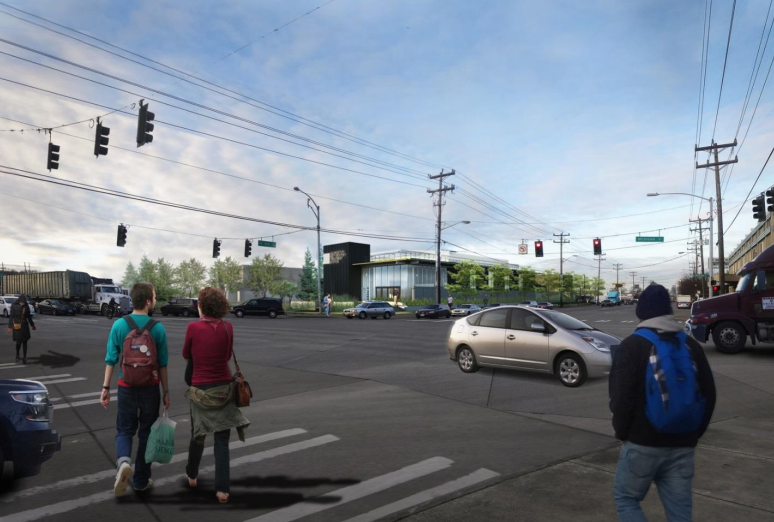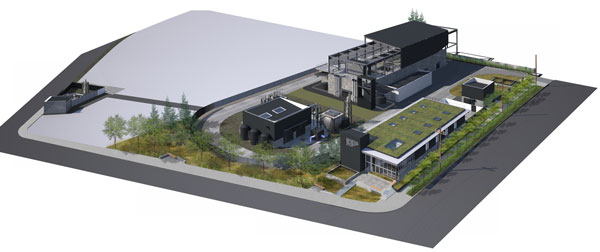Better stormwater and sewage management is coming to Georgetown soon. King County is sponsoring a project to construct a new combined sewer overflow (CSO) station and system at the corner of S Michigan St & 4th Ave S (6185 4th Ave S). Stormwater and sewage in the area will be directed to the Georgetown Wet Weather Treatment Station (GWWTS)–known as a regulator station–which will act as a storage and primary treatment facility. Once water is released from the regulator station, it will be conveyed through pipes to be discharged from an outfall into the Duwamish River, just west of the 1st Avenue Bridge. The main purpose of the project is to improve water quality of the Duwamish River and Puget Sound while also relieving pressure elsewhere in the sewer and stormwater system.
Earlier this month, the Seattle City Council gave the green light on the project with the approval of the Conditional Use Permit that King County had requested. The project has gone through a fair bit of public process to better align it with some community priorities. Major infrastructural projects like this often get some level of review with the Seattle Design Commission, but in this case the critical path to approval and construction for King County and other priorities of the Commission meant that the review was waived.
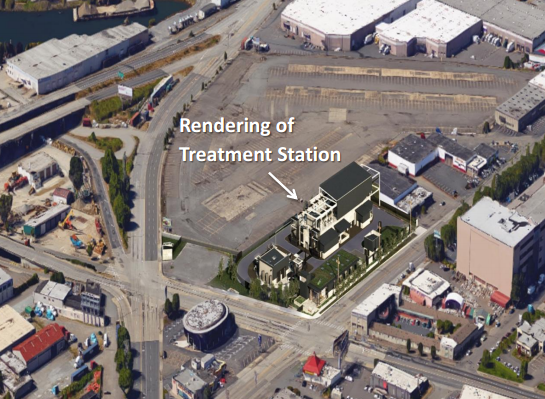
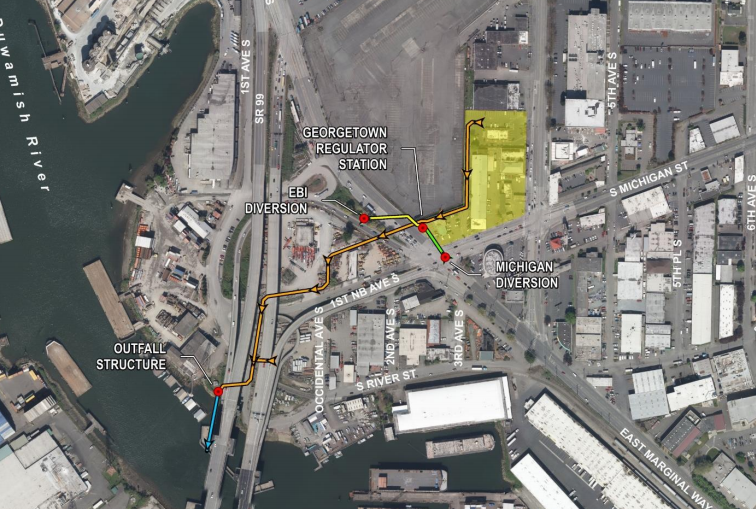
Why Construct A CSO Facility
The southend of the Duwamish Industrial Area has two CSO facilities that include the Brandon Street and South Michigan Street regulator stations. These are supposed to manage the local demands for treatment of stormwater and sewer flows. However, the facilities are occasionally operating beyond their designed capacities. As a result, over 130 million gallons of excess untreated stormwater and sewage simply bypasses them every year. These untreated discharges go straight into the Duwamish River and Puget Sound threatening the livelihood of all kinds of aquatic species and poses significant risk to human health.
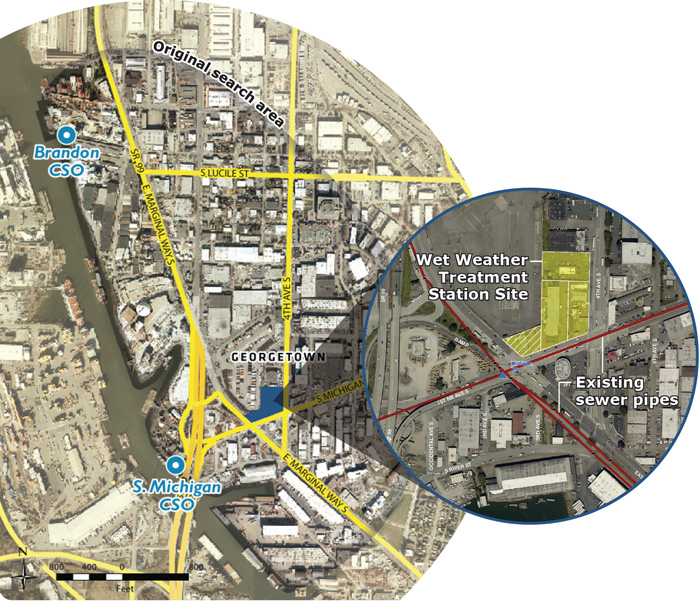
The Environmental Protection Agency and Washington State Department of Ecology recognized that the state of the Duwamish River and Puget Sound was in serious peril from the threat of combined sewer overflows. Legal action was taken to force King County to come up with a plan to address the problem and come into compliance with the Clean Water Act. The County decided to settle the legal issue through a Consent Decree, a legal instrument that outlines certain actions to be taken by the consenting party (King County) to fulfill a certain obligation. In this case, that is compliance with a plan to eliminate untreated water discharges into the Puget Sound and waterbodies that feed it. In the process of developing the plan, King County sought public feedback to tailor measures and approaches to deliver CSO projects though 2030. In 2013, the Department of Justice found that all parties were in agreement on the terms of the plan and issued the Consent Decree.
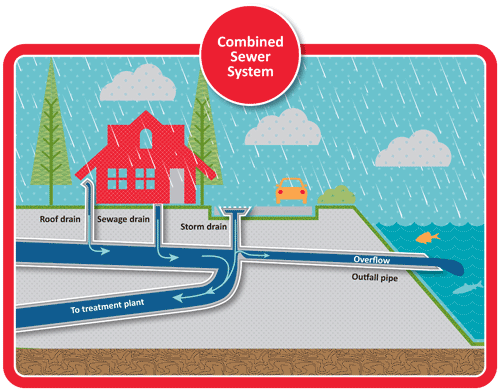
The GWWTS will be a significant part in King County’s effort to eliminate CSO events, particularly in the heavily polluted Duwamish River. The GWWTS is designed to treat up to 70 million gallons of water per day, which should lift a heavy weight off of its local CSO treatment counterparts. King County estimates that the Brandon Street and South Michigan Street regulator stations should see a 95% decrease in overflows (totaling about 20 overflow events annually) once the GWWTS is active.
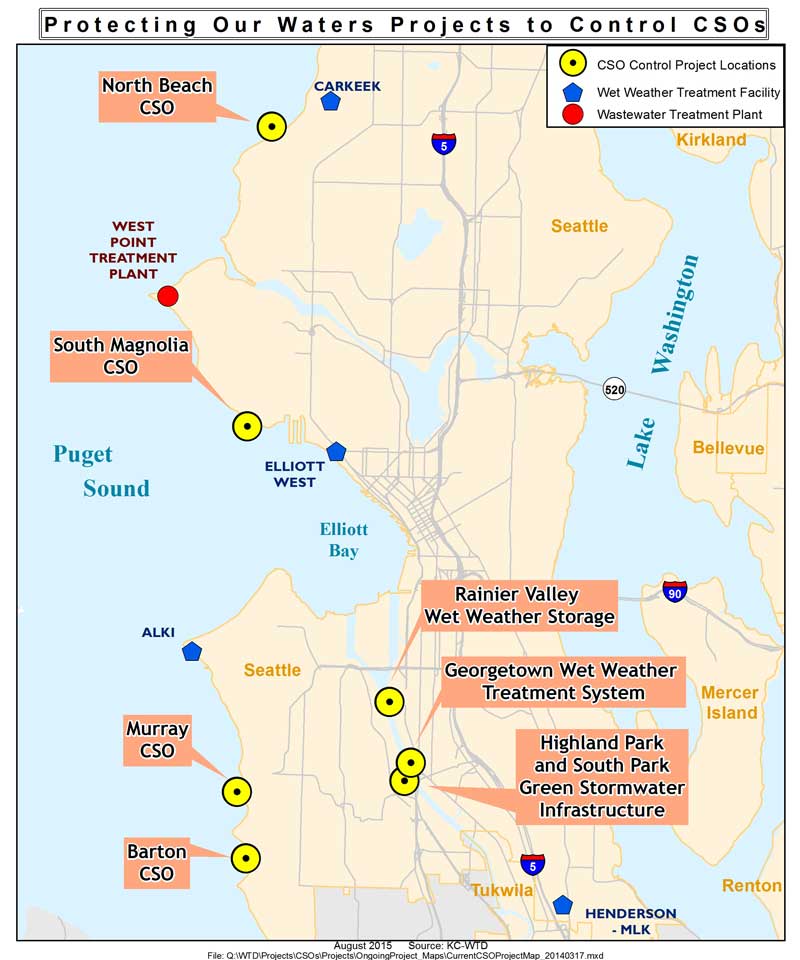
King County also has 13 other CSO projects that are either in project development or approved for the future. The locations are spread across most parts of Seattle:
CSO Projects Planned For Seattle
| Name | CSO Control Type | Status |
|---|---|---|
| Barton CSO Control Project | natural drainage | completed |
| Highland Park and South Park Green Stormwater Infrastructure Project | natural drainage and storage | design and planning |
| Murray CSO Control Project | storage | under construction |
| North Beach CSO Control Project | storage | under construction |
| South Magnolia CSO Control Project | storage | under construction |
| 3rd Ave W CSO Control Project | storage | approved |
| 11th Ave NW CSO Control Project | natural drainage and storage | approved |
| Chelan CSO Project | storage | approved |
| Hanford #2 – Lander St – King St – Kingdome CSO Control Project | storage and treatment | approved |
| Montlake CSO Control Project | natural drainage and storage | approved |
| University CSO Control Project | natural drainage and storage | approved |
Design Of The Georgetown Regulator
King County has chosen a 2.8-acre site in the General Industrial 2 zone on the edge of Georgetown to construct the GWWTS. The design approach has been to create a very modern, industrial, and environmentally-sensitive facility. The GWWTS will include much of what you’d expect for a stormwater and sewer treatment plant like primary treatment facilities to screen effluent, maintenance and operations facilities, and back-up generators to keep things running in the event of power failure. The facility will also come with clarification, disinfection, and odor control systems to make water more natural and eliminate smells. As is becoming common in many of these large infrastructure projects, King County also plans to provide training and educational facilities within the regulator station.
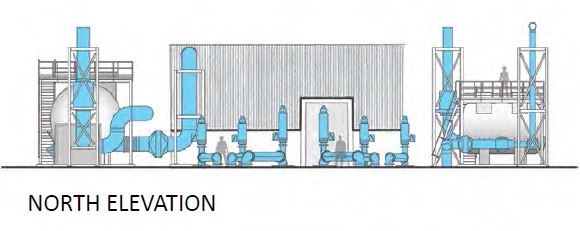
King County wants to get a little creative with the project by adding some very flashy lighting to the facility’s piping system. The main treatment building will be fairly viewable from the street, in part because of a semi-transparent fence planned along the street. Pipes that water passes through will be of the large, industrial variety making them highly noticeable from far distances. When the station is operating, lights will become illuminated on the pipes and standspipes, similar to the image above. King County will also provide interpretative signage about the facility in areas that are publicly accessible.
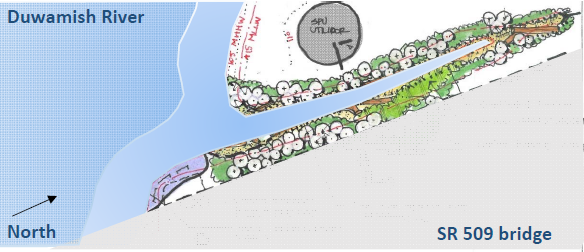
Not only will the regulator station prevent untreated water from entering waterways, the design of the facility will also be sensitive to the environment in other ways. A green roof will be installed on one of the longer buildings. The intent behind this is for vegetation and materials to clean and absorb stormwater that hits the roof, reduce the exhausting of heat from the building, and provide an amenity that doubles as an educational opportunity. A stormwater system will be connected to the green roof, allowing excess water to be funneled into cisterns and rain gardens to collect. King County estimates that the cisterns will be able to store more that 35,000 gallons of water per year from rooftop flows. The stored water will be released to on-site vegetation, such as the rain gardens, grass, and trees. The latter will help play an important role in capturing carbon to clean the air and doing double duty to absorb dispersed stormwater from the cisterns and roofs.
King County will do some off-site environmental enhancements as part of the outfall installation on the Duwamish River. The outflow appear along a small finger of the river. Native vegetation will be planted around the edges of the river finger to improve the shoreline environment. Logs could also be installed to provide protection from erosion and allow nature to take its course through decay and decomposition.
The County has acquired two of the four parcels of land for the GWWTS. About a dozen businesses will have to be relocated before site construction gets underway. King County is well on its way to getting the project fully permitted with construction set to begin next year. The GWWTS will likely be up and running in the early 2020s.
Stephen is a professional urban planner in Puget Sound with a passion for sustainable, livable, and diverse cities. He is especially interested in how policies, regulations, and programs can promote positive outcomes for communities. With stints in great cities like Bellingham and Cork, Stephen currently lives in Seattle. He primarily covers land use and transportation issues and has been with The Urbanist since 2014.


